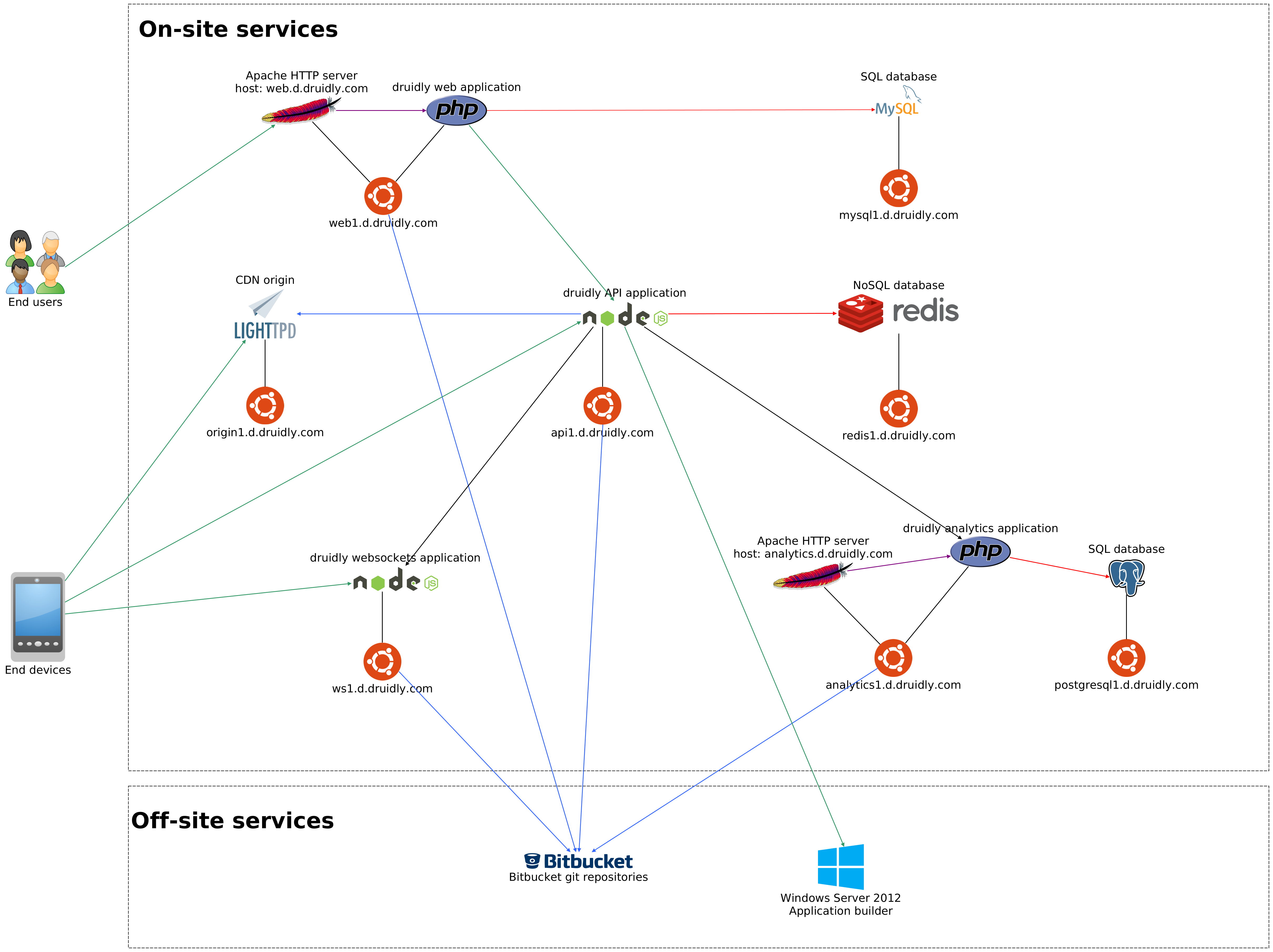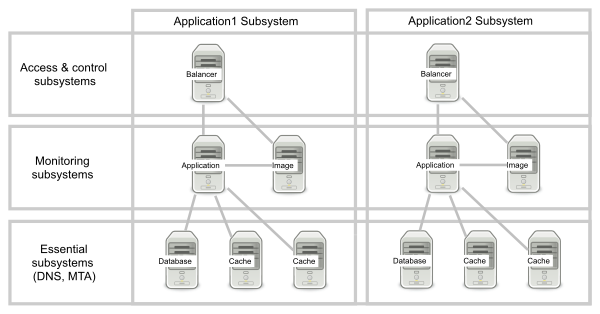Home SaltStack-Formulas Project Introduction
Model-driven Architectures¶
We have the formula structures covered, now we can proceed to define how the metadata is modelled and key patterns we need to know to build nice standard models.
Model Driven Architecture (MDA) is an answer to growing complexity of systems controlled by configuration management and orchestration tools. It provides unified node classification with atomic service definitions.
Core Principles¶
Following table shows the core principles for creating model-driven architectures.
| Atomicity | Services are separated with such affinity that allows running them on single node. |
|---|---|
| Reusability / Replacibility | Different services serving the same role can be replaced without affecting connected services. |
| Service Roles | Services may implement multiple roles, these can be then separated to individual nodes. |
| Dynamic Resources | Service metadata is alwyas available for definition of dynamic resources. |
| Change Management | The strength lies not in descibing the static topology of services but more the process of ongoing updates. |
Sample Model Architecture¶
Following figure show sample system that has around 10 services with some outsourced by 3rd party service providers.
We can identify several subsystem layers within this complex application system.
- Proxy service - Distributing load to application layer
- Application service - Application with caches
- Data persistence - Databases and filesystem storage
Horizontally Scaled Services¶
Certain services span across multiple application systems. These usually play critical roles in system maintenance and are essential for smooth ongoing operations.
These services usually fit into one of following categories:
| Access / Control | SSH access, orchestration engine access, user authentication. |
|---|---|
| Monitoring | Events and metric collections, alarmins, dashboards and notifications. |
| Essential | Name services, time services, mail transports, etc … |
These horizontal services are not entirely configured directly but rather reuse the metadata of other surrounding services to configure itself (for example metering agent collects metrics to collect for metadata of surrounding services on the same node, node exports also metadata for external metric collector to pick).

